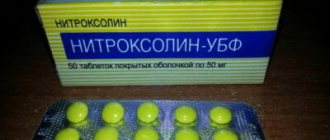Write a review
Reviews: 0
Manufacturers: Lek Skopje doo, Representative
Active ingredients
- Amoxicillin
- Clavulanic acid
Disease class
- Not indicated. See instructions
Clinical and pharmacological group
- Not indicated. See instructions
Pharmacological action
- Broad spectrum antibacterial action
Pharmacological group
- Penicillins in combinations
pharmachologic effect
Broad-spectrum antibiotic; contains semisynthetic penicillin amoxicillin and β-lactamase inhibitor clavulanic acid. Clavulanic acid provides a stable inactivated complex with these enzymes and ensures the resistance of amoxicillin to the effects of β-lactamases produced by microorganisms.
Clavulanic acid, similar in structure to beta-lactam antibiotics, has weak intrinsic antibacterial activity.
Amoxiclav has a wide spectrum of antibacterial action. Active against amoxicillin-sensitive strains, including strains producing β-lactamases, incl. aerobic gram-positive bacteria: Streptococcus pneumoniae, Streptococcus pyogenes, Streptococcus viridans, Streptococcus bovis, Enterococcus spp., Staphylococcus aureus (except methicillin-resistant strains), Staphylococcus epidermidis (except methicillin-resistant strains), Staphylococcus saprophyticus, Listeria spp.; aerobic gram-negative bacteria: Bordetella pertussis, Brucella spp., Campylobacter jejuni, Escherichia coli, Gardnerella vaginalis, Haemophilus ducreyi, Haemophilus influenzae, Helicobacter pylori, Klebsiella spp., Moraxella catarrhalis, Neisseria gonorrhoeae, Neisseria meningitidis, Pasteurella multocida, Proteus spp. , Salmonella spp., Shigella spp., Vibrio cholerae, Yersinia enterocolitica, Eikenella corrodens; gram-positive anaerobes: Peptococcus spp., Peptostreptococcus spp., Clostridium spp., Actinomyces israelii, Fusobacterium spp., Prevotella spp., gram-negative anaerobes: Bacteroides spp.
Is it possible to use Amoxiclav during pregnancy?
Prescribing Amoxiclav to pregnant women is actually not contraindicated, since it belongs to the category of safe medications that do not have a toxic, teratogenic or carcinogenic effect on the embryo and the mother’s body. It does not have a pronounced negative effect on the fetus, especially if it already has formed rudiments of vital organs and systems.
The absence of categorical prohibitions on use does not mean that you can drink Amoxiclav during pregnancy if any inflammatory disease or bacterial infection occurs. So, not a single doctor will recommend treating bacterial rhinitis or runny nose during a cold during pregnancy with this antibiotic. For this, more compelling reasons are needed: lack of effectiveness of general therapy, prolonged inflammation, suppuration, or the risk of infection of the genital tract during cystitis in pregnant women.
Important! In most cases, taking Amoxiclav during pregnancy is recommended when the problem cannot be solved without antibiotics.
Indications for use
Treatment of infectious and inflammatory diseases caused by microorganisms sensitive to the drug:
- infections of the upper respiratory tract and ENT organs (including acute and chronic sinusitis, acute and chronic otitis media, retropharyngeal abscess, tonsillitis, pharyngitis);
- infections of the lower respiratory tract (including acute bronchitis with bacterial superinfection, chronic bronchitis, pneumonia);
- urinary tract infections;
- gynecological infections;
- skin and soft tissue infections, including human and animal bites;
- infections of bone and connective tissue;
- biliary tract infections (cholecystitis, cholangitis);
- odontogenic infections.
Amoxiclav Quiktab 250mg+62.5mg 20 pcs. dispersible tablets
pharmachologic effect
Antibiotic - semi-synthetic penicillin + beta-lactamase inhibitor.
Composition and release form Amoxiclav Quiktab 250 mg + 62.5 mg 20 pcs. dispersible tablets
Tablets 250 mg+62.50 mg
- Active ingredient: Amoxicillin trihydrate - 287.0 mg (corresponds to amoxicillin - 250.0 mg); Potassium clavulanate - 74.4 mg (corresponding to clavulanic acid) - 62.5 mg);
- Excipients: Crospovidone - 19.7 mg; Silicon dioxide - 4.9 mg; Sweet orange flavor - 19.7 mg; Microcrystalline silicon-containing cellulose * - 49.2 mg; Sucralose - 2.7 mg; Sodium stearyl fumarate - 14.3 mg; Iron (III) oxide yellow, E 172 - 0.6 mg; Mannitol - 167.4 mg.
*contains 98% microcrystalline cellulose and 2% colloidal silicon dioxide.
Dispersible tablets 250 mg+62.50 mg.
2 tablets in blisters from Al/Al.
5, 7 or 10 blisters along with instructions for medical use in a cardboard pack.
Description of the dosage form
Tablets 250+125 mg: white or off-white, oblong, octagonal, biconvex, film-coated, imprinted “250/125” on one side and “AMC” on the other side.
Fracture appearance: yellowish mass.
Directions for use and doses
Inside. The dosage regimen is set individually, depending on the age, body weight, kidney function of the patient, as well as the severity of the infection.
Amoxiclav® is recommended to be taken at the beginning of a meal for optimal absorption and to reduce possible side effects from the digestive system.
The course of treatment is 5–14 days. The duration of treatment is determined by the attending physician. Treatment should not continue for more than 14 days without repeated medical examination.
Children under 12 years old
The dose is prescribed depending on age and body weight. The recommended dosage regimen is 40 mg/kg/day in 3 divided doses.
Children weighing 40 kg or more should be prescribed the same doses as adults. For children aged ≤6 years, it is preferable to take a suspension of the drug Amoxiclav®.
Adults and children over 12 years of age (or >40 kg body weight)
The usual dose in case of mild to moderate infection is 1 table. 250+125 mg every 8 hours or 1 tablet. 500+125 mg every 12 hours, in case of severe infection and respiratory tract infections - 1 table. 500+125 mg every 8 hours or 1 tablet. 875+125 mg every 12 hours.
Since amoxicillin and clavulanic acid combination tablets of 250+125 mg and 500+125 mg contain the same amount of clavulanic acid - 125 mg, then 2 tablets. 250+125 mg are not equivalent to 1 tablet. 500+125 mg.
Dosage for odontogenic infections
1 table 250+125 mg every 8 hours or 1 tablet. 500+125 mg every 12 hours for 5 days.
Patients with impaired renal function
Dose adjustments are based on the maximum recommended dose of amoxicillin and are carried out taking into account creatinine Cl values:
- adults and children over 12 years of age (or ≥40 kg body weight) (Table 2);
- for anuria, the interval between dosing should be increased to 48 hours or more;
- 875+125 mg tablets should be used only in patients with creatinine Cl >30 ml/min.
table 2
| Creatinine clearance | Amoxiclav® dosage regimen |
| >30 ml/min | No dose adjustment required |
| 10–30 ml/min | 1 table 50+125 mg 2 times a day or 1 tablet. 250+125 mg (for mild to moderate infection) 2 times a day |
| 1 table 500+125 mg 1 time per day or 1 tablet. 250+125 mg (for mild to moderate infection) 1 time per day | |
| Hemodialysis | 1 table 500+125 mg or 2 tablets. 250+125 mg every 24 hours + 1 tablet. 500+125 mg or 2 tablets. 250+125 mg during dialysis and at the end of the dialysis session (due to decreased serum concentrations of amoxicillin and clavulanic acid) |
Patients with liver dysfunction
Amoxiclav® should be taken with caution. It is necessary to regularly monitor liver function.
Powder for suspension for oral administration
Pharmacodynamics
Mechanism of action
Amoxicillin is a semisynthetic broad-spectrum antibiotic that is active against many gram-positive and gram-negative microorganisms. At the same time, amoxicillin is susceptible to destruction by beta-lactamases, and therefore the spectrum of activity of amoxicillin does not extend to microorganisms that produce this enzyme.
Clavulanic acid is a beta-lactamase inhibitor, structurally related to penicillins, and has the ability to inactivate a wide range of beta-lactamases found in microorganisms resistant to penicillins and cephalosporins. Clavulanic acid is sufficiently effective against plasmid beta-lactamases, which most often cause bacterial resistance, and is not effective against type I chromosomal beta-lactamases, which are not inhibited by clavulanic acid.
The presence of clavulanic acid in the drug protects amoxicillin from destruction by enzymes - beta-lactamases, which expands the antibacterial spectrum of amoxicillin.
Below is the activity of the combination of amoxicillin and clavulanic acid in vitro.
Grampore-positive aerobes: Bacillus Anthracis, Enterococcus Faecalis, Listeria MonocyTogenes, NoCardia Asteroides, Streptococcus Pyogenes1,2, Streptococcus Agalactiae1,2, other beta-heemolytic statococci1, 2, Staphylococcus aureus (sensitive to methicillin) 1, Staphylococcus saprophyticus (sensitive to methicillin), coagulase-negative staphylococci (sensitive to methicillin).
Gram-negative aerobes: Bordetella pertussis, Haemophilus influenzae1, Helicobacter pylori, Moraxella catarrhalis1, Neisseria gonorrhoeae, Pasteurella multocida, Vibrio cholerae.
Other: Borrelia burgdorferi, Leptospira icterohaemorrhagiae, Treponema pallidum.
Gram-positive anaerobes: species of the genus Clostridium, Peptococcus niger, Peptostrepiococcus magnus, Peptostreptococcus micros, species of the genus Pepto streptococcus.
Gram-negative anaerobes: Bcicteroides fragilis, species of the genus Bacteroides, species of the genus Capnocytophaga, Eikenella corrodens, Fusobacterium nucleatum, species of the genus Fusobacterium, species of the genus Porphyromonas, species of the genus Prevotella.
Bacteria for which acquired resistance to the combination of amoxicillin and clavulanic acid is likely
Gram-negative aerobes: Escherichia coli1, Klebsiella oxytoca, Klebsiella pneumoniae, species of the genus Klebsiella, Proteus mirabilis, Proteus vulgaris, species of the genus Proteus, species of the genus Salmonella, species of the genus Shigella. Streptococcus pneumoniae1,2, streptococci of the Viridans group.
Gram-positive aerobes: species of the genus Corynebacterium, Enterococcus faecium.
Bacteria that are naturally resistant to the combination of amoxicillin and clavulanic acid
Gram-negative aerobes: species of the genus Acinetobacter, Citrobacter freundii, species of the genus Enterobacter, Hafhia alvei, Legionella pneumophila, Morganella morganii, species of the genus Providencia, species of the genus Pseudomonas, species of the genus Serratia, Stenotrophomonas maltophilia, Yersinia enterocolitica.
Other: Chlamydia pneumoniae, Chlamydia psittaci, species of the genus Chlamydia, Coxiella burnetii, species of the genus Mycoplasma.
1For these bacteria, the clinical effectiveness of the combination of amoxicillin with clavulanic acid has been demonstrated in clinical studies.
2 strains of these types of bacteria do not produce beta-lactamases. Sensitivity during amoxicillin monotherapy suggests similar sensitivity to the combination of amoxicillin and clavulanic acid.
Pharmacokinetics
Suction
The active ingredients of the drug are quickly and completely absorbed from the gastrointestinal tract (GIT) after oral administration. Absorption of active ingredients is optimal when the drug is used with food.
The following are the pharmacokinetic parameters of amoxicillin and clavulanic acid after administration at a dose of 45 mg/6.4 mg/kg, divided into two doses, by patients under 12 years of age.
Average value of pharmacokinetic parameters
| Cmax (mg/ml) | T max (h) | AUC (mg in h/l) | T1/2 (h) | |
| Amoxicillin | 11,99±3,28 | 1,0 (1,0-2,0) | 35,2±5,0 | 1,22±0,28 |
| Clavulanic acid | 5,49±2,71 | 1,0 (1,0-2,0) | 13,26±5,88 | 0,99±0,14 |
- Cmax - maximum concentration in blood plasma;
- Tmax is the time to reach the maximum concentration in the blood plasma;
- AUC—area under the concentration-time curve;
- T1/2 - half-life.
Metabolism
About 10-25% of the initial dose of amoxicillin is excreted by the kidneys in the form of an inactive metabolite (penicillic acid). Clavulanic acid in the human body undergoes intensive metabolism with the formation of 2,5-dihydro-4-(2-hydroxyethyl)-5-oxo-1H-pyrrole-3-carboxylic acid and 1-amino-4-hydroxy-butan-2-one and is excreted by the kidneys, through the gastrointestinal tract, and also with exhaled air in the form of carbon dioxide.
Distribution
As with intravenous administration of a combination of amoxicillin and clavulanic acid, therapeutic concentrations of amoxicillin and clavulanic acid are found in various tissues and interstitial fluid (gallbladder, abdominal tissue, skin, adipose and muscle tissue, synovial and peritoneal fluids, bile, purulent discharge) .
Amoxicillin and clavulanic acid have a weak degree of binding to plasma proteins. Studies have shown that about 25% of the total amount of clavulanic acid and 18% of amoxicillin in the blood plasma is bound to plasma proteins.
The volume of distribution is approximately 0.3-0.4 L/kg for amoxicillin and approximately 0.2 L/kg for clavulanic acid. Amoxicillin and clavulanic acid do not penetrate the blood-brain barrier when the meninges are not inflamed. Amoxicillin (like most penicillins) is excreted in breast milk.
Trace amounts of clavulanic acid may also be found in breast milk. With the exception of the possibility of sensitization, diarrhea and candidiasis of the oral mucosa, there are no other known negative effects of amoxicillin and clavulanic acid on the health of breastfed infants.
Animal reproductive studies have shown that amoxicillin and clavulanic acid cross the placental barrier. However, no negative effects on the fetus were detected.
Removal
Amoxicillin is eliminated primarily by the kidneys, while clavulanic acid is eliminated through both renal and extrarenal mechanisms. After a single oral dose of 875 mg/125 mg or 500 mg/125 mg, approximately 60-70% of amoxicillin and 40-65% of clavulanic acid are excreted unchanged by the kidneys during the first 6 hours. The average half-life (T1/2) of amoxicillin/clavulanic acid is approximately 1 hour, and the average total clearance is approximately 25 L/h in healthy patients. In various studies, it was found that amoxicillin excretion by the kidneys within 24 hours is approximately 50-85%, clavulanic acid - 27-60%. The largest amount of clavulanic acid is excreted during the first 2 hours after administration.
The pharmacokinetics of amoxicillin/clavulanic acid does not depend on the gender of the patient.
Patients with impaired renal function
The total clearance of amoxicillin/clavulanic acid decreases in proportion to the decrease in renal function. The decrease in clearance is more pronounced for amoxicillin than for clavulanic acid, because Most amoxicillin is excreted by the kidneys. Doses of the drug for renal failure should be selected taking into account the undesirability of amoxicillin accumulation while maintaining normal levels of clavulanic acid.
Patients with liver dysfunction
In patients with impaired liver function, the drug is used with caution. It is necessary to constantly monitor liver function.
Both components are removed by hemodialysis and minor amounts by peritoneal dialysis.
Indications for use Amoxiclav Quiktab 250 mg + 62.5 mg 20 pcs. dispersible tablets
Infections caused by sensitive strains of microorganisms:
- upper respiratory tract and ENT organs (including acute and chronic sinusitis, acute and chronic otitis media, retropharyngeal abscess, tonsillitis, pharyngitis);
- lower respiratory tract (including acute bronchitis with bacterial superinfection, chronic bronchitis, pneumonia);
- urinary tract (eg cystitis, urethritis, pyelonephritis);
- in gynecology;
- skin and soft tissues, including human and animal bites;
- bone and connective tissue;
- biliary tract (cholecystitis, cholangitis);
- odontogenic.
Contraindications
- hypersensitivity to the components of the drug;
- history of hypersensitivity to penicillins, cephalosporins and other beta-lactam antibiotics;
- history of cholestatic jaundice and/or other liver dysfunction caused by taking amoxicillin/clavulanic acid;
- infectious mononucleosis and lymphocytic leukemia;
- children under 12 years of age or weighing less than 40 kg;
- phenylketonuria;
- renal failure (Cl creatinine
With caution: history of pseudomembranous colitis, gastrointestinal diseases, liver failure, severe renal impairment, pregnancy, lactation, simultaneous use with anticoagulants.
Application Amoxiclav Quiktab 250mg+62.5mg 20 pcs. dispersible tablets during pregnancy and breastfeeding
Amoxiclav® Quiktab can be prescribed during pregnancy if there are clear indications.
Amoxicillin and clavulanic acid pass into breast milk in small quantities.
special instructions
During a course of treatment, it is necessary to monitor the state of the function of the hematopoietic organs, liver, and kidneys.
In patients with severe renal impairment, adequate dose adjustment or increased intervals between doses is required.
It is possible that superinfection may develop due to the growth of microflora that is insensitive to it, which requires a corresponding change in antibacterial therapy.
In patients who are hypersensitive to penicillins, cross-allergic reactions with cephalosporin antibiotics are possible.
In women with premature rupture of membranes, it was found that prophylactic therapy with amoxicillin + clavulanic acid may be associated with an increased risk of developing necrotizing colitis in the newborn.
Crystalluria very rarely occurs in patients with reduced diuresis. During the use of large doses of amoxicillin, it is recommended to take sufficient fluids and maintain adequate diuresis to reduce the likelihood of amoxicillin crystal formation.
Lab tests. High concentrations of amoxicillin give a false-positive reaction to urine glucose when using Benedict's reagent or Fehling's solution. It is recommended to use enzymatic reactions with glucosidase.
Before starting treatment, it is necessary to interview the patient to identify a history of hypersensitivity reactions to penicillins, cephalosporins or other beta-lactam antibiotics.
In order to reduce the risk of side effects from the gastrointestinal tract, you should take the drug before or during meals.
When using high doses of Amoxiclav®Quictab in patients with crystalluria, it is necessary to adequately replace fluid loss.
If antibiotic-associated colitis occurs, Amoxiclav® Quiktab should be immediately discontinued, consult a doctor and begin appropriate treatment. Drugs that inhibit peristalsis are contraindicated in such situations.
Treatment must continue for another 48–72 hours after the disappearance of clinical signs of the disease. When using estrogen-containing oral contraceptives and amoxicillin simultaneously, other or additional methods of contraception should be used.
Amoxicillin and clavulanic acid can provoke nonspecific binding of immunoglobulins and albumins to the erythrocyte membrane, which can cause a false positive reaction with the Coombs test.
The use of amoxicillin and clavulanic acid is contraindicated in infectious mononucleosis, because may cause a measles-like rash.
Special precautions when disposing of unused medicinal products. There is no need for special precautions when disposing of unused Amoxiclav®.
Impact on the ability to drive a car or perform work that requires increased speed of physical and mental reactions. Due to the possibility of developing side effects from the central nervous system, such as dizziness, headache, convulsions, during treatment, care should be taken when driving and other activities that require concentration and speed of psychomotor reactions.
Overdose
There are no reports of death or life-threatening side effects due to drug overdose.
Symptoms: in most cases - gastrointestinal disorders (abdominal pain, diarrhea, vomiting), anxiety, insomnia, dizziness are also possible, and in isolated cases - seizures.
Treatment: in case of overdose, the patient should be under medical supervision, treatment should be symptomatic.
In case of recent use (less than 4 hours) of the drug, it is necessary to perform gastric lavage and prescribe activated charcoal to reduce absorption. Amoxicillin/potassium clavulanate is removed by hemodialysis.
Side effects Amoxiclav Quiktab 250mg+62.5mg 20 pcs. dispersible tablets
From the digestive system: loss of appetite, nausea, vomiting, diarrhea, abdominal pain, gastritis, stomatitis, glossitis, black “hairy” tongue, darkening of tooth enamel, hemorrhagic colitis (can also develop after therapy), enterocolitis, pseudomembranous colitis, disorder liver function, increased activity of ALT, AST, alkaline phosphatase and/or bilirubin levels in the blood plasma, liver failure (more often in the elderly, men, with long-term therapy), cholestatic jaundice, hepatitis.
Allergic reactions: itching, urticaria, erythematous rashes, erythema multiforme exudative, angioedema, anaphylactic shock, allergic vasculitis, exfoliative dermatitis, Stevens-Johnson syndrome, acute generalized exanthematous pustulosis, a syndrome similar to serum sickness, toxic epidermal necrolysis.
From the hematopoietic system and lymphatic system: reversible leukopenia (including neutropenia), thrombocytopenia, hemolytic anemia, reversible increase in PT (when used together with anticoagulants), reversible increase in bleeding time, eosinophilia, pancytopenia, thrombocytosis, agranulocytosis.
From the central nervous system: dizziness, headache, convulsions (may occur in patients with impaired renal function when taking high doses of the drug).
From the urinary system: interstitial nephritis, crystalluria, hematuria.
Other: candidiasis and other types of superinfection.
From the side of the central nervous system: hyperactivity. Feelings of anxiety, insomnia, behavior changes, agitation.
Drug interactions
Antacids, glucosamine, laxatives, aminoglycosides slow down absorption, ascorbic acid increases absorption.
Diuretics, allopurinol, phenylbutazone, NSAIDs and other drugs that block tubular secretion (probenecid) increase the concentration of amoxicillin (clavulanic acid is excreted mainly by glomerular filtration).
The simultaneous use of Amoxiclav® and methotrexate increases the toxicity of methotrexate.
Administration together with allopurinol will increase the incidence of exanthema. Concomitant use with disulfiram should be avoided.
Reduces the effectiveness of drugs, during the metabolism of which PABA is formed; ethinyl estradiol - risk of breakthrough bleeding.
The literature describes rare cases of increased INR in patients with the combined use of acenocoumarol or warfarin and amoxicillin. If simultaneous use with anticoagulants is necessary, PT or INR should be carefully monitored when prescribing or discontinuing the drug.
The combination with rifampicin is antagonistic (mutual weakening of the antibacterial effect). The drug Amoxiclav® should not be used simultaneously in combination with bacteriostatic antibiotics (macrolides, tetracyclines), sulfonamides due to a possible decrease in the effectiveness of the drug Amoxiclav®.
The drug Amoxiclav® reduces the effectiveness of oral contraceptives.
Increases the effectiveness of indirect anticoagulants (suppressing intestinal microflora, reduces the synthesis of vitamin K and the prothrombin index). In some cases, taking the drug may prolong PT; therefore, caution should be exercised when using anticoagulants and the drug Amoxiclav®Quictab simultaneously.
Probenecid reduces the excretion of amoxicillin, increasing its serum concentration.
In patients receiving mycophenolate mofetil, after starting the combination of amoxicillin with clavulanic acid, a decrease in the concentration of the active metabolite, mycophenolic acid, was observed before taking the next dose of the drug by approximately 50%. Changes in this concentration may not accurately reflect overall changes in mycophenolic acid exposure.
Directions for use and doses
Inside. The dosage regimen is set individually, depending on the age, body weight, kidney function of the patient, as well as the severity of the infection.
The tablets must be dissolved in half a glass of water (minimum 30 ml) and mixed thoroughly, then drink or hold the tablets in your mouth until completely dissolved, then swallow.
In order to reduce the risk of side effects from the gastrointestinal tract, the drug should be taken at the beginning of meals.
If treatment is started with parenteral administration of the drug, it is possible to continue therapy by taking Amoxiclav Quiktab tablets orally.
Overdose
There is no data on complications after an overdose of Amoxiclav Quiktab 250 mg + 62.5 mg that were life-threatening or fatal. Taking Amoxiclav in excess quantities can cause:
- Disorder of the gastrointestinal tract functions in the form of vomiting, frustration, pain;
- Kidney failure;
- Cramps.
To eliminate the consequences of an overdose of Amoxiclav Quiktab, it is usually sufficient to take activated carbon or another adsorbent and gastric lavage. In severe cases, hemodialysis is used.
Contraindications
- a history of indications of cholestatic jaundice and/or other liver dysfunction caused by taking amoxicillin/clavulanic acid;
- children under 12 years of age or weighing less than 40 kg;
- hypersensitivity to the components of the drug;
- phenylketonuria;
- history of hypersensitivity to any antibiotic from the group of penicillins, cephalosporins and other beta-lactam antibiotics.
- Due to the fact that in a large number of patients suffering from infectious mononucleosis and lymphocytic leukemia who received ampicillin, the appearance of an erythematous rash was observed, the use of antibiotics of the ampicillin group for such patients is not recommended.
Drug interactions
The effectiveness of the treatment course with Amoxiclav Quiktab increases with the combined use of other antibiotics, but the simultaneous use of drugs from the group of macrolides, tetracyclines, and sulfonamides reduces the effectiveness of the drug.
- In order not to reduce the effect of active substances, it is necessary to discontinue bacteriostatic agents while taking Amoxiclav.
- Amoxiclav substances potentiate the effect of methotrexate and increase its toxicity.
- When taken together with Disulfiram and Allopurinol, the risk of allergic reactions increases.
- The absorption of the active substances of Amoxiclav is slowed down by laxatives, antacids, glucosamines, and aminoglycosides.
- Ascorbic acid accelerates the absorption of Amoxiclav.
Possibility of replacement
If a woman is intolerant to the components of Amoxiclav, the use of it, as well as drugs of similar composition, is contraindicated. In this case, the emphasis is on anti-inflammatory and immunostimulating therapy. If this drug is well tolerated, but it is not possible to purchase it, the drug can be replaced with similar drugs:
- Augmentin;
- Liklav;
- Flemoklav and others.
Before using other medications, you should consult a gynecologist. You should also consult the doctor who prescribed the antibiotic. They will evaluate whether a similar antibiotic is harmful for the development of pregnancy, and will select the optimal dosage of the medicine. It is likely that additional testing will be required to determine the sensitivity of bacteria to a specific drug, which is only possible in the laboratory.
Important! Often, a woman and even a pharmacist from a pharmacy cannot assess all the risks for mother and baby, so only a doctor can choose a remedy other than replacing Amoxiclav during pregnancy.
What do patients say about Amoxiclav?
Patients who took it during pregnancy leave positive reviews about the drug Amoxiclav. Among the main advantages of the antibiotic, they note:
- absence of significant adverse reactions;
- low risk to the fetus;
- good treatment effectiveness and, in particular, rapid elimination of unpleasant symptoms.
According to statistics, in most cases Amoxiclav does not cause problems like other antibiotics, so pregnancy occurs as expected. These data are confirmed by reviews from doctors who recommend using Amoxiclav at any stage of pregnancy, even when other antibiotics are contraindicated. The only thing worth paying attention to is the accuracy of the dosages and dosage regimen.





